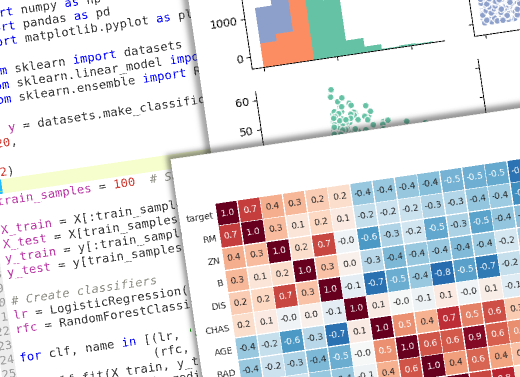SYNOPSIS
As a recurrent topic for a few years, the Data Science gathers subjects like statistics, machine learning, computer science and the domain expertise. Machine learning methods are characterized by algorithms that allow problem solving starting from data.
This training is focused on the use of Data Science in the Geographic Information System (GIS). Coupled with GIS tools, Data Science Python libraries make this programming language very powerful in geospatial data analysis purpose.
The course participants will mostly experiment themselves a wide range of Data Science and GIS-related Python tools.
GOALS
The course will give you the following skills :
-
- Know how to use Data Science tools for geospatial data analysis
- Master pandas (data analysis), scikit-learn (machine learning algorithms) and some other open source GIS libraries
PROGRAM
This program is indicative. It could be adapted to your specific needs.
- Working environment configuration
- Python, ipython and jupyter-notebook setting up
- Presentation of package management tools (pip, conda)
- Data analyze Python library setting up (numpy, pandas, matplotlib, seaborn, Luigi)
- GIS Python library setting up (psycopg2, pyproj, pyosmium, folium, …)
- PostgreSQL and Postgis setting up
- Geospatial data gathering
- Reading/Writing from/to a
csvfile - Reading/Writing from/to a
jsonfile - Reading/Writing from/to a database with psycopg2 and Luigi
- Reading OpenStreetMap data with pyosmium
- Reading/Writing from/to a
- Analyze of geospatial datasets
- Elementary statistics and feature interpretation
- Data handling with pandas
- Machine learning algorithm conception with scikit-learn
- Data visualization with matplotlib and seaborn
- Mapping
- Mapping in Python with folium
- Mapping with QGIS

DURATION
3 days
PRE-REQUISITE
- Good knowledge of Python
- Knowledges in scientific computing and data science (see also DS2: Python for scientific computing and DS3: Python for Data Science)
- Notions in SQL (database requesting)
- Notions in GIS
The next courses (Lyon or Paris):
.
Contact us for on-site trainings (dates are flexible to your needs).
You want to participate in this training ?
Please give us the details below if you can:
* Training
Place of training, Number of people involved, Initial level of participants, Time constraints, Specific expectations
* Contact details
Organization, Address, Contact, Email, Intracommunity VAT

